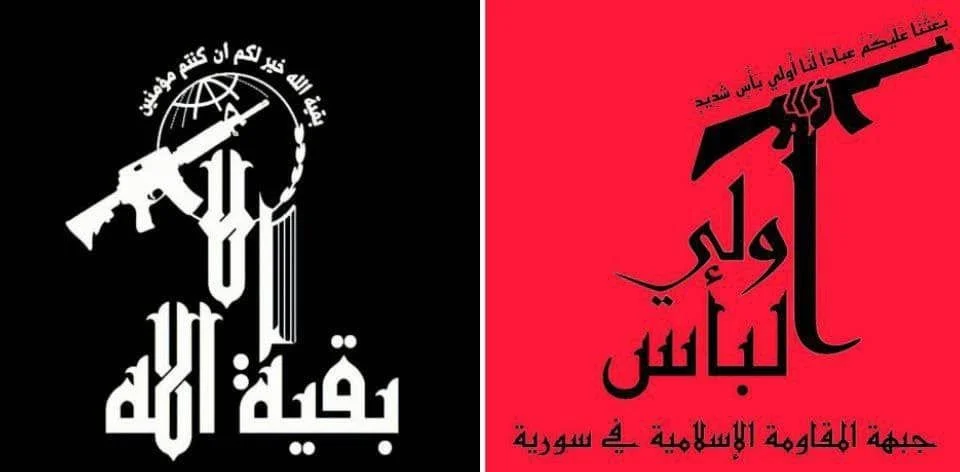Militant Shia Groups Announce Unified Resistance Front in Syria
Executive Summary
On May 24, 2025, two Iranian-aligned Shia militant factions—Kata’ib Baqiyat Allah and Jabhat al-Muqawamah al-Islamiyah fi Suriya (Awliya al-Ba’s)—issued a joint communiqué signaling the launch of a consolidated resistance initiative in Syria. The statement calls for the unification of “authentic” resistance forces to confront foreign influence, particularly Western and Israeli presence, and rejects all forms of normalization with Israel. The visual propaganda accompanying the announcement heavily features Qur’anic references and militant iconography, highlighting a renewed ideological and operational alignment rooted in Shia Mahdist eschatology and anti-Zionist narratives.
Analysis
The left half of the propaganda poster displays the emblem of Kata’ib Baqiyat Allah, a Shia militia that uses Mahdist symbolism to assert divine legitimacy. Its name translates to “Brigades of God’s Remnant,” a reference tied to the awaited Imam al-Mahdi. The associated Qur’anic verse (Surah Hud 11:86) reinforces this spiritual theme. The right side of the image features Awliya al-Ba’s (“Men of Valor”), formally known as the Islamic Resistance Front in Syria. Their logo incorporates the silhouette of a rifle stylized into Arabic script, along with a verse from Surah Al-Isra (17:5) that has previously been used by Hezbollah and other Iranian-backed groups to suggest divine sanction for militant action.
The joint declaration contains the following strategic points:
Emphasis on the end of internal divisions among resistance groups.
Commitment to joint military and media operations in Syria.
Public rejection of foreign military presence and normalization with Israel.
Pledge to develop a new resistance strategy aimed at achieving “complete liberation.”
This alignment suggests an effort to consolidate Iran’s proxy presence in Syria into a more coherent front, potentially under IRGC-QF oversight. The groups’ coordination echoes past efforts by Hezbollah and Kata’ib Hezbollah to unify messaging and operations in Iraq and Syria under a shared ideological banner.
The public merger of these two groups marks a rhetorical and operational escalation, likely aiming to revitalize recruitment, media output, and field coordination. While the statement does not name specific targets, the invocation of anti-Israel themes and Mahdist motifs indicates an enduring intent to justify regional violence under religious-nationalist pretexts. Future attacks against U.S., Israeli, or allied interests in the region may be framed as acts of divine resistance by this newly formed alliance.


